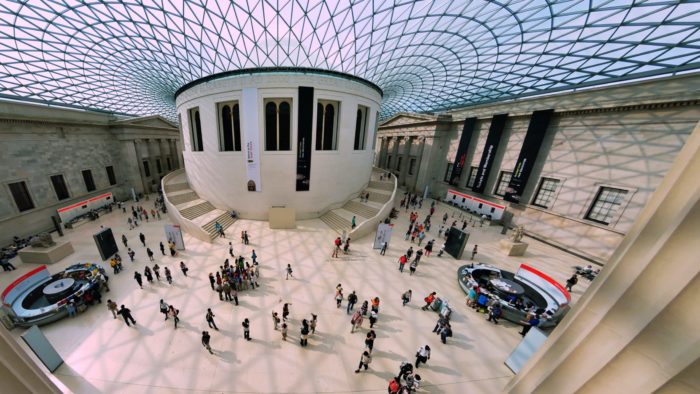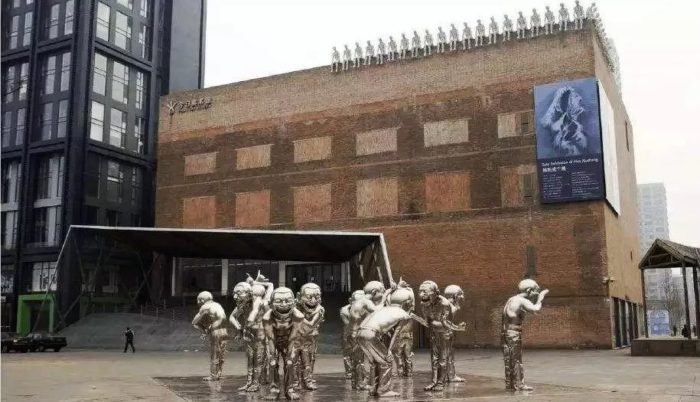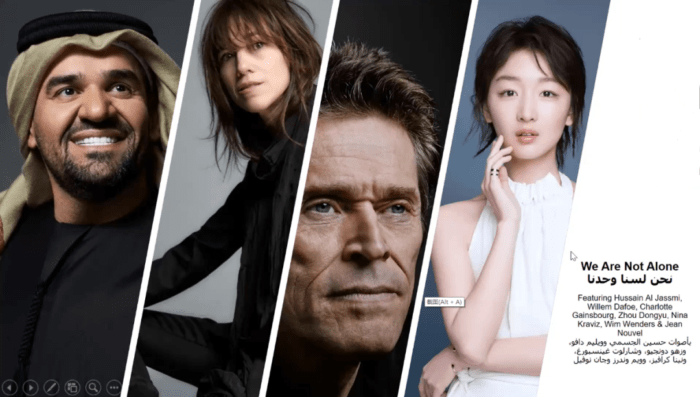May 18, 2021 is the 45th International Museum Day. The theme for this year is « The Future of Museums: Restoration and Reinvention » by the International Council of Museums.
The latest report released by UNESCO shows that under the severe test of the epidemic in 2020, the average closing time of global museums is 150 days, and the revenue is reduced by 40%-60%.
In the context of normalized epidemic prevention and control around the world, how can museums respond to multiple challenges, adjust and improve their own functional positioning and development direction in a timely manner, and actively explore new development and new models? The new plan is a problem that museums around the world generally have to think about and face.
In general, there are three types of plans as follows:
From offline to online, enrich display channels
During the epidemic, as museums around the world were forced to close one after another, online exhibitions became the only way for museums to display.
In fact, online exhibitions are not new.
The epidemic is both a challenge and an opportunity for museums. The challenge is how to open up public cultural venues in an orderly manner under the premise of effective epidemic prevention; the opportunity is that a new exhibition method is rapidly promoted, that is, online exhibitions. Even during the closing period, the museum could achieve « closed doors without closing exhibitions », and the audience can browse the museum’s related exhibitions on the Internet without leaving home. In addition, the epidemic is a major global social event. How museums record and display this history has also been put on the agenda of each museum. Many of them have collected a large number of anti-epidemic objects and images from the society.
The epidemic has promoted the upgrading of museums’ social service methods and accelerated the in-depth integration of digital technology and museum cultural resources. With the acceleration of the digital construction of museums, the link between the industry and the public’s spiritual and cultural needs will be further strengthened. More and more museums are paying attention to the operational effectiveness of the museum’s official social media accounts. In 2020, in the face of the sudden epidemic, the door of the museum was closed, and the importance of operating experience to good service became apparent. According to preliminary statistics, in 2020, the number of views and readings of the museum’s online exhibitions, live broadcasts and cultural relics introduction was on average 5 times the previous years.

From recovery to remodeling, improve self-function
The theme for this year’s International Museum Day is « The Future of Museums: Restoration and Reinvention », which is related to the epidemic to a certain extent, and also profoundly shows that museums will play an increasingly important role in our social life.
Human beings are spiritual animals, and they have a beautiful appeal to find a spiritual home with nostalgic impulses, and a strong need to create meaning, that is, to build a common social and cultural identity through « stories ». Museums are one of the results. It is such a spiritual space. « The world is being virtualized, but the museum of the future will still be centered on objects. The ‘object’ refers to the architectural space, and the building is the first exhibit in the museum; it also refers to the collection. The collection, protection, and research of objects , exhibition and education will continue to be the core of the museum’s work, but technological means will play an increasingly important role. Digital products based on “things” and their dissemination will give “things” a better experience.
Special campaigns for this special period
When the epidemic spread and the world slowed down, the Today Art Museum in China rethought the museum’s positioning and mission during the closing period, and achieved many bold breakthroughs.
- Ten big names in art and design are invited to bring a series of public welfare sharing courses – « Ten Days Talk » in the form of online live broadcast + community discussion. Following the lectures of wise men, supplement knowledge and update people’s understanding of the world .
- Select high-quality exhibitions that have been exhibited in the past, and specially plan an audio program – Today’s Yiqu Broadcasting, so that children and parents can listen to the exhibition without leaving home.
- Explore more diverse forms of cooperation with different platforms, promote cultural and creative products through social media, and promote the gradual upgrading of residents’ consumption structure.

The Louvre Museum Abu Dhabi did a perfect combination of the plans above.
Due to the spread of the new crown epidemic, the Louvre Museum Abu Dhabi was closed in March 2020 and did not reopen until June. During the closing time of more than 100 days, the online 360-degree panoramic tour was also available. It could provide convenience and possibility for tourists who wish to visit art exhibitions.
At the same time, the Louvre Abu Dhabi Pavilion has also launched a multilingual digital display of exhibits, which can provide better guide services for visitors from all over the world. The Louvre Abu Dhabi Pavilion presents an immersive atmosphere that integrates with its surroundings to create an imaginative museum.
The Curator Manuel has been committed to presenting Chinese and Western cultures in multiple ways in the museum, so as to combine the past, present and future to create a microcosm of the world’s art. In this case, visitors can experience in all directions the charm of art.
Moreover, the museum held a « We Are Not Alone » campaign, inviting celebrities from all over the world to speak for the museum and tell a story about the future, as well as future prospects and expectations.

The epidemic is becoming less severe, and the museums around the world are finding back their original status step by step. However, human beings will never stop facing obstacles, and these marketing plans based on marketing principles will always be useful.

